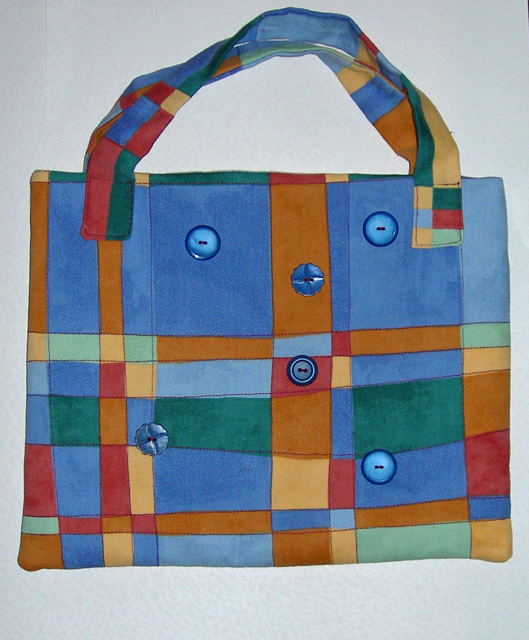No - it's a bit of experimental eco-friendly dyeing. One of our group members recently attended a workshop given by the Australian textile artist India Flint who dyes all her own fabrics using plant material and no chemicals at all. She gathers her leaves, flowers, bark, lichen, etc. and places them between layers of fabric which are then tightly rolled and bound so that the fabric is in very close contact with the plant material. The bundles are then boiled for about 1 hour - I think that is right, anyway it's what I did. White vinegar gives darker colours so I added just a dash to my boiling water. I used bits of old sheeting, and oddments of silk cut to approximately A4 size.
Silk and wool give better results, cotton is not so good. I tried some ripe honeysuckle berries which produced these yellow blobs. They are brighter in reality and look better than this photo which looks like a very dirty tablecloth!
Colours from previous layers seep through onto the next one. Here I think are very faint marks from red rose petals. I wonder if I had used a newly opened flower instead of one which was beginning to fade I would have got a stronger result. Maybe I didn't roll or bind them tightly enough.
Spent day lily flowers give quite a strong colour. Strange that they come out purple when the flower was a rich deep red.
However, I am pleased to have had even mild success from such sketchy instructions and must look into this in greater detail. Obviously a knowledge of which plants to use will be essential rather than just going round the garden and hoping for the best. Possibly picking leaves at certain times of the year might make a difference - I'd better buy India Flint's book!




























.jpg)








13 comments:
I love your heuchera leaf prints, they're so delicate. I've got one of India's books and it's beautiful, even for just a leaf through.
Lovely stuff, Heather. I must have a go.
I love the way you always have a go Heather. What a lovely delicate result. I must have a look at her work.
Ah now Heather you're on the road to another obsession, once you get started Eco dyeing it's hard to stop. Eucalyptus leaves give great results, especially if they are picked after a drought. Not sure if you have many of them in the UK. I found red rose petals were better if they were dried out. Red and brown onion skins give great results as do purple carrot and the yellow turmeric root. If you steam them in a pot of red cabbage things take on a blue/purple colour. If you have an old cast iron pot you can get some nice darker colours. Have fun creating, It's always a surprise when you open the bundle.
Wow Heather, I can see lots of interesting experiments coming up - those results look interesting already! Have fun - I have sometimes thought about giving it a go, but I have always chickened out! Cheers.
Lovely results from the heuchera leaves. I've done some natural dyeing with onion skins with good results but I still find it hard to get excited by dyeing.
Well Heather you're braver than I am! What interesting results. Very delicate and scope for ome good textile pieces.
The heuchera prints are lovely. Do buy India's book, you'll love it.
I would love to meet India in person, lucky you xx
I would love to try eco-dying Heather.....it looks exciting. I love your heuchera leaf prints; they worked so well. I have a Peach melba variety...wonder what that would do! :-)
I like the results you got from the leaves! Eco dyeing must be exciting never knowing what is going to happen when you unwrap. A bit like Christmas!
The trick is to steam or vry low simmer and then leave for as long as possible, silk is best but I think using soy milk as a mordant helps with cotton. Some eucalyptus leaves leave red marks,purple prunus leaves leave good colours, experiment, a bit of copper or iron in the water helps too and wrapping the material tightly and tying with string. Have fun.
Post a Comment